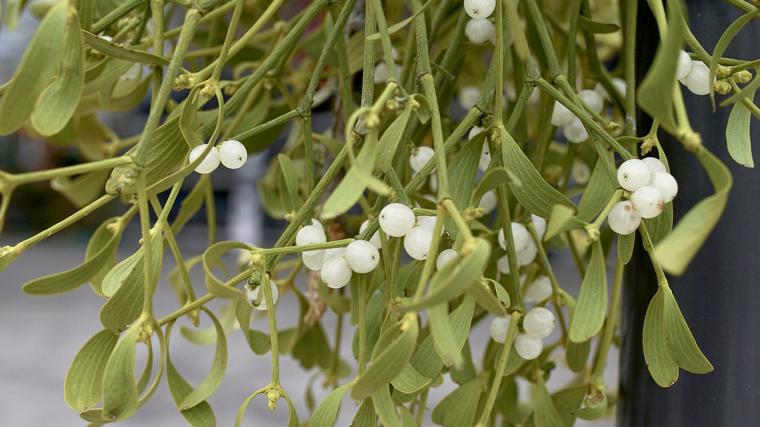Writer
Linda GeistCOLUMBIA, Mo. – For many, the holiday season would not be complete without evergreens, holly, mistletoe and other traditional plants. But it’s important to exercise care with some of these plants for happy and safe holidays, said University of Missouri Extension horticulturist David Trinklein.
“In days of old, people rarely brought holiday greenery into the home before Christmas Eve,” Trinklein says. Doing so was considered bad luck for the coming year. This meant that plant material remained fresh for Christmas Day and posed much less of a fire hazard–a definite must in an era when candles were a primary source of illumination.
Today, however, the holiday season starts with Thanksgiving and lasts through New Year’s Day. Plant material brought home at the beginning of the season is likely to dry by Jan. 1.
Proper care will not only make greenery safer indoors but will add to its attractiveness, said Trinklein. Evergreen needles turn brown and holly leaves blacken as they age, so start with greenery that is as fresh as possible. Greenery from local retail outlets might be relatively fresh, Trinklein said, “but the freshest greenery comes from one’s own landscape and should be used whenever possible.”
Whatever the source of greenery, Trinklein advises placing cut ends in water. If your greenery came from a retail outlet, re-cut the stems first. Keep the plant material in the coolest place possible until it is time to move it indoors. Freezing temperatures will not harm the greenery, but unfrozen water should be available to the stems at all times.
Keep stems in water after moving them into the home. Design your decorations so branches fit into a container that holds water. Trinklein suggests adding floral preservatives such as those used for cut flowers. Change the preservative solution weekly to keep the water from becoming foul.
Don’t place greenery near hot air ducts, radiators or other heat sources. Never put decorations with greenery near fireplaces, where sparks might ignite them.
Some traditional plants contain toxic compounds that might pose a health risk if ingested, Trinklein says. For example, the red berries of holly are mildly poisonous and can cause nausea, vomiting and diarrhea. Children and pets often are attracted to these bright berries. Keep holly well out of the reach of youngsters and make sure any berries that might fall from the decoration won’t land where they can be retrieved by a curious child or pet.
The leaves, bark and seeds of yew contain toxic alkaloids known as taxines. The yew’s small red fruit might be attractive to children. The pulp of the fruit is harmless, but the seeds can be quite toxic.
Use mistletoe with extreme care. Both American and European types are highly toxic. “This is a case where purchasing artificial plant material might be safest if mistletoe is a must-have in your holiday decor,” Trinklein says. If using fresh mistletoe, wrap it with plastic so leaves and berries won’t fall to the floor.
Other plants associated with the holidays that produce toxic substances include English ivy, whose leaves are toxic; juniper, which has slight amounts of a diuretic compound in its seeds; and white cedar, whose leaves produce a toxic oil. However, poisonings from this latter group are extremely rare due to relatively low levels of toxic agents in these plants.
“All of the above is not meant to cause readers to utter ‘bah, humbug’ relative to decorating for the holiday season or to go out and purchase artificial plant material,” Trinklein said. “This is simply a reminder that prevention is the best cure, and education is key to prevention. Happy holidays!”
